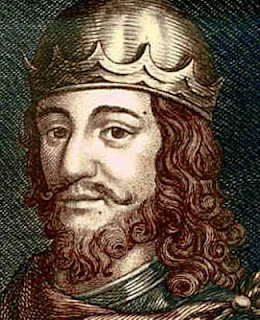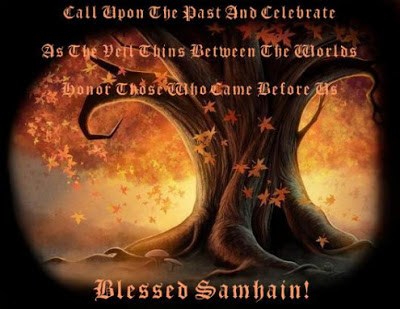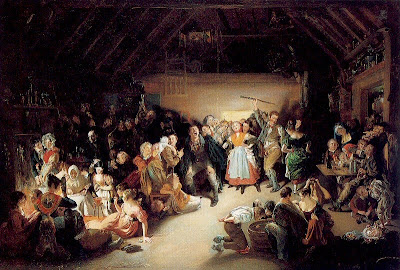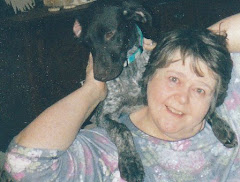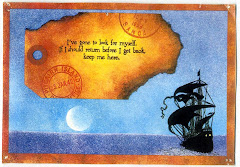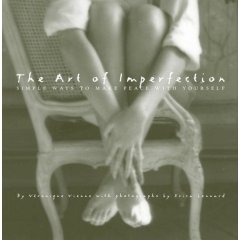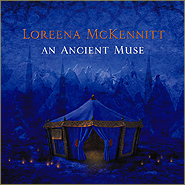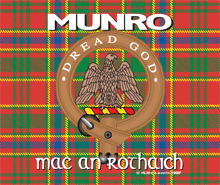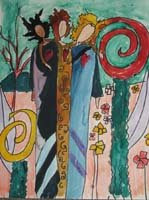"The Mayflower in Plymouth Harbor", William Halsall, 1882
I have always loved Thanksgiving for its delicious food and autumn-hued decorations. My first - very fond - memories of Thanksgiving are of creating Thanksgiving turkeys in art class, the more colorful their feathers, the better. Like all grade schoolers across the country, we learned about the First Thanksgiving on American shores.
It is a holiday that I keep separate from Christmas madness, believing it should be given the complete attention it deserves as a secular holiday enjoyed by all Americans, without the frenzy of gift giving, and with an emphasis on family and friends.
This year, Thanksgiving is even more special to me because of my discoveries through ancestry.com. At present, I know of at least two ancestors who came to the New World for religious freedom. I'm not saying they came over on the Mayflower, the first ship that landed at Plymouth, Massachusetts, in 1620. No, I have no claims to being a Mayflower descendant - not yet, anyway!
Records show that my ancestor John Churchill from England arrived in Plymouth in 1643, 23 years after the first settlers. His wife was Hannah Pontus, from Leiden, Holland. I'm thinking that John probably met Hannah after he left England for the more religiously tolerant Holland.
I also have a bunch of ancestors who settled Jamestown Colony, Virginia, the first permanent English settlement in America. Again, I'm not saying that they came over on the first ships - Discovery, Godspeed and the Susan Constant - in 1607.
Lt. Col. Henry Meese
An interesting ancestor of mine making his name in the Jamestown area was Lt. Col. Henry Meese. Born in 1600 in Oxfordshire, England, he was a one-time London merchant who immigrated to America but made many trips between his home country and the New World. He owned land in Virginia, served in the Virginia House of Burgesses and earned his military title from the Indian-fighting militia. He died not long after making a last trip back to England.
What makes Henry so interesting to me is his daughter Grace Frizer Meese, and the fact that he had a couple of Native American wives. "Mary" (Christian name) and her sister Keziah were daughters of Wahaganoche, Chief of the Patawomeck Nation (Patawomeck = Potomac). It is very difficult to tell if Grace was the daughter of either woman and therefore half Native American.
Jamestown settlers trading with Virginia Indians
Many families with trees on ancestry.com claim that Grace is the daughter of Mary. However, the birth dates for Wahaganchoe, Mary and Grace are so wildly differing in each case that it becomes a tangled mess. I can't believe how many family trees list Grace as born 1627 and her so-called mother Mary as being born in 1640. C'mon people, use your brains!
In the end, Grace may have had a white mother. Therefore, just like I am not claiming to be a Mayflower descendant, I am not claiming to be the descendant of an Indian princess, just of a man who had Indian wives. It would be a matter of great pride for me to claim Native American blood in the people who were contemporaries of the more famous Pocahontas and her father Powhatan.
Pocahontas saving John Smith
It has been a long, long time since I studied Early American history. But upon learning of my heritage, I had a few questions:
What is the difference between Puritans and Pilgrims, if any?
Were there any differences between the settlers of the Plymouth Colony at Plymouth, MA and those from the Massachusetts Bay Colony centered around Boston and Salem, MA?
Were there differences between the New England settlers and the Virginia settlers?
Who celebrated the first Thanksgiving?
"The First Thanksgiving", J. L. G. Ferris
The first thing I learned was how important upper-case and lower-case letters were in naming groups of people involved in the making of America. ALL people who make religious trips are pilgrims with a small "p". Therefore both the Plymouth Colony and Massachusetts Bay Colony settlers were pilgrims. But the ones who came to be known as Pilgrims with a capital "P" were the settlers at Plymouth. A small group of English people who arrived in 1620, they were aided by Squanto and his tribe, who, as I remember from picture books, helped the settlers plant maize and fertilize their crops with fish. These Pilgrims are the ones who celebrated what has become known as The First Thanksgiving.
Of course, I realize that The First Thanksgiving has become mythologized and the story contains assumptions, half-truths and downright lies. For example, no one knows if they served turkey. The only written report says they had "fowl". But this is the Thanksgiving tale that is ingrained in our American psyche.
(PS - The travelers on the Mayflower in 1620 were headed for the Jamestown, Virginia, colony when fierce storms caused them to turn course and land at Cape Cod, MA. Good luck for them, as it turned out, with both the Pilgrims and the New England Native Americans being of a more harmonious nature than their Southern counterparts.)
Covering all bases, this caption says "Puritans and Pilgrims
arriving in the New World during the early 1600s"
(Artist Unknown)
Now on to another "small p, large p" definition. The group of people in England known as puritans with a small "p" were those who wanted to purify or reform the Anglican Church (Church of England). Therefore, members of both the Plymouth and Massachusetts Bay colonies were "small p" puritans.
However, the Pilgrims of Plymouth wanted to break completely away from the Anglicans and consequently were known as Separatists. The Massachusetts Bay settlers, a much larger group who arrived in America about 1630, had no intention of totally breaking away from the Anglicans and became known as Puritans with a capital " P".
The two New England colonies merged in 1691 and the differentiation between the Pilgrims/pilgrims and the puritans/Puritans became lost in the mists of time. (The Puritan witchcraft trials at Salem being a discussion for another time.)
Vintage Thanksgiving Postcard
I don't think these are Puritans -
he looks like a Cavalier!
But what about the first 100 settlers of the Virginia Company at Jamestown? They were more the entrepreneurial type rather than the religious freedom type. They were aristocrats who were ill prepared for the new life they faced. They arrived during a time of drought and were too late to plant crops the first year. Famine, disease and conflict with the Indian tribes brought them to the brink of failure. They were "rescued" in 1610 by a new group of settlers with a good store of supplies.
But who's to say the Jamestown settlers didn't have "a" first Thanksgiving (as opposed to "The" First Thanksgiving? Coming from England, they were familiar with the harvest home celebrations of their native land. I think that when they finally had a good harvest they did sit down to a good meal and thank God.
Therefore I salute both my Massachusetts and Virginia settler ancestors on this Thanksgiving Day.
Another vintage Thanksgiving postcard.
Happy Thanksgiving, everyone!










